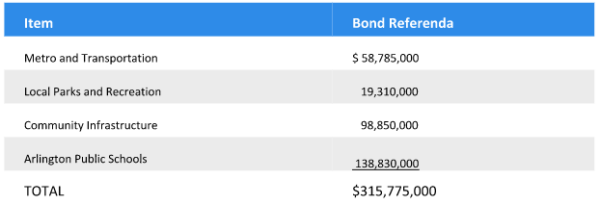 Peter’s Take is a weekly opinion column. The views and opinions expressed in this column are those of the author and do not necessarily reflect the views of ARLnow.com.
Peter’s Take is a weekly opinion column. The views and opinions expressed in this column are those of the author and do not necessarily reflect the views of ARLnow.com.
In last week’s column, I outlined some of Arlington’s self-imposed limitations in utilizing “community benefits” as conditions for approving developer site plan requests for additional density. See also my Sept. 22 column recommending preparation of integrated, project-specific fiscal impact statements.
Critical Reforms
The most critically-necessary community benefits’ reforms include:
Consider fiscal impact statements at each special exception/site plan hearing
Arlington should take advantage of this planning tool routinely utilized for years by other Northern Virginia jurisdictions like Fairfax and Loudoun. Both use project-specific fiscal impact statements as part of their review processes. Even though those jurisdictions use a proffer system rather than Arlington’s special exception/site-plan system, the advantages to policy-makers and the public of utilizing this tool are common to all of our jurisdictions.
Falls Church has utilized fiscal impact statements since 2003.
Arlington should expedite the adoption of its own fiscal impact model to be considered at each special exception/site plan hearing. Any impacts and equitably allocated offsetting community benefits need to be measured from the applicable base by-right zoning.
Assess the impact on schools of incremental enrollment
The fiscal impact model Arlington ultimately adopts should explicitly consider incremental school enrollment impacts.
In Falls Church, voluntary school capital contributions have been a staple of past agreements with developers of mixed-use projects.
The Fairfax fiscal impact model has explicitly considered school impacts since 2003.
Fairfax determines a per-student generation factor by housing type, and estimates how many students are anticipated from the particular mix of housing units in each proposed development. Fairfax then computes a per-student cost for each project, which when multiplied times the number of students anticipated from the project, yields the total incremental enrollment cost that forms the basis for negotiations with the developer.
Important updates to the Fairfax model (effective July 1, 2016) are discussed below.
Assess the impact on parks of incremental usage
Under the updated Fairfax impact model, benefits for incremental school or park usage negotiated with a developer do NOT have to be limited to creation of, or refurbishments to, a school or park within the boundaries of the site of the proposed project — so long as those benefits are “reasonable” in amount and address impacts that are “specifically attributable” to the “residential use component” of the project.
Parks include “playgrounds and other recreational facilities.” Such off-site benefits must provide a “direct and material benefit” to residents of the proposed project. Both on-site and off-site benefits for schools or parks can include cash.
Allow citizens to speak publicly at SPRC site plan meetings
By the time a Site Plan Review Committee (SPRC) site plan meeting is scheduled with respect to any particular developer proposal to obtain additional density, the principal features of such a proposal, including any corresponding community benefits, have already been negotiated in private between the developer and the county. To provide a fair balance at site plan meetings, the SPRC process should be revised to specifically permit individual citizens and citizen groups to speak publicly at the meetings.
Conclusion
Although the pace of site plan proposals declined after the Great Recession, that pace is now increasing rapidly. The County Board should initiate an appropriate public process to consider the reforms discussed here and others, with a direction to report back in six months.




